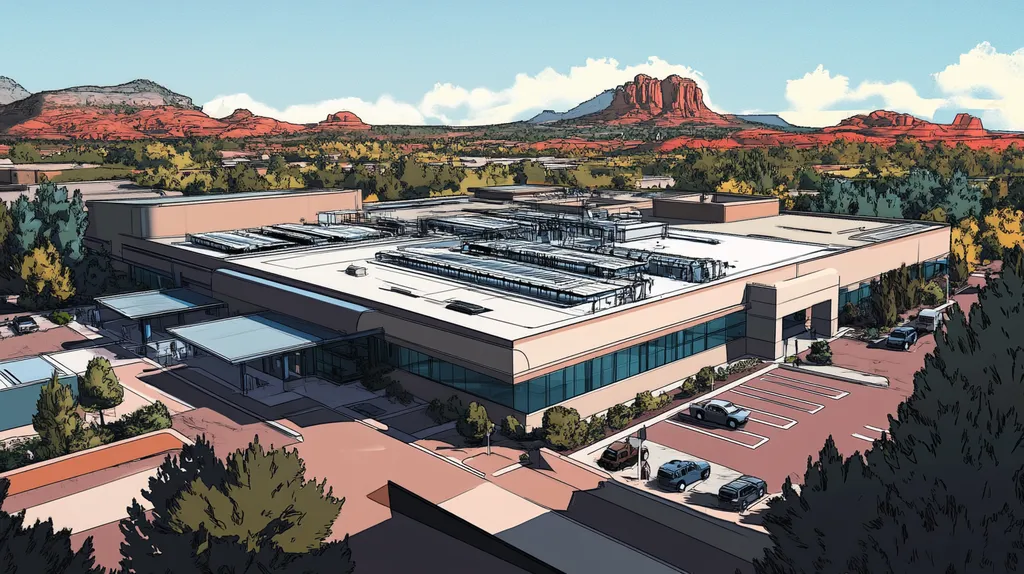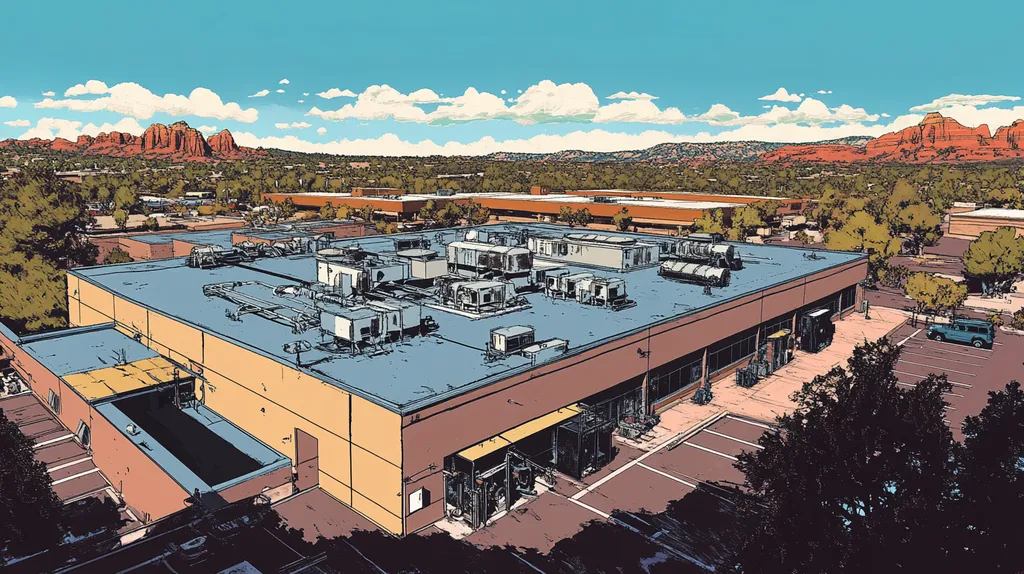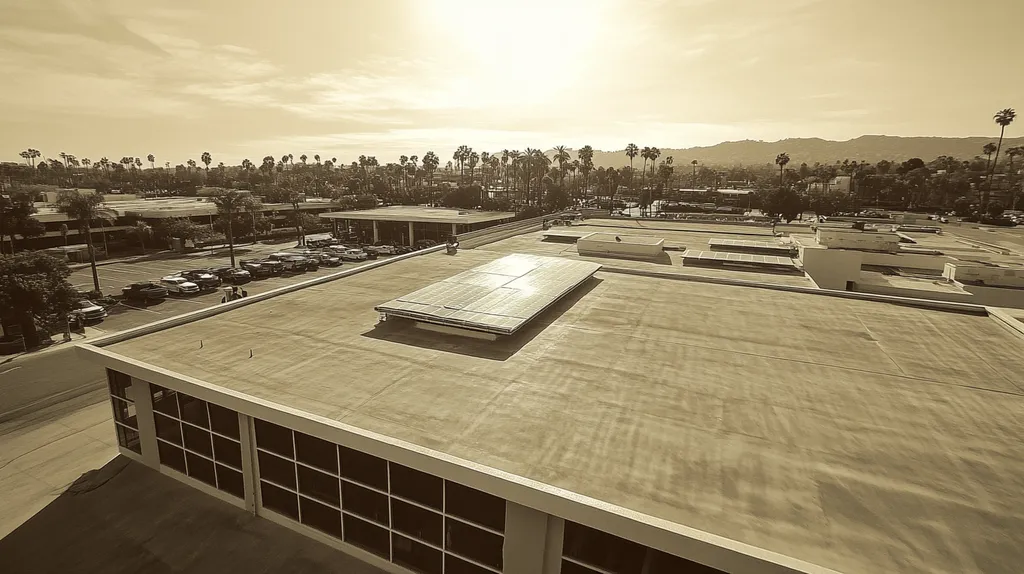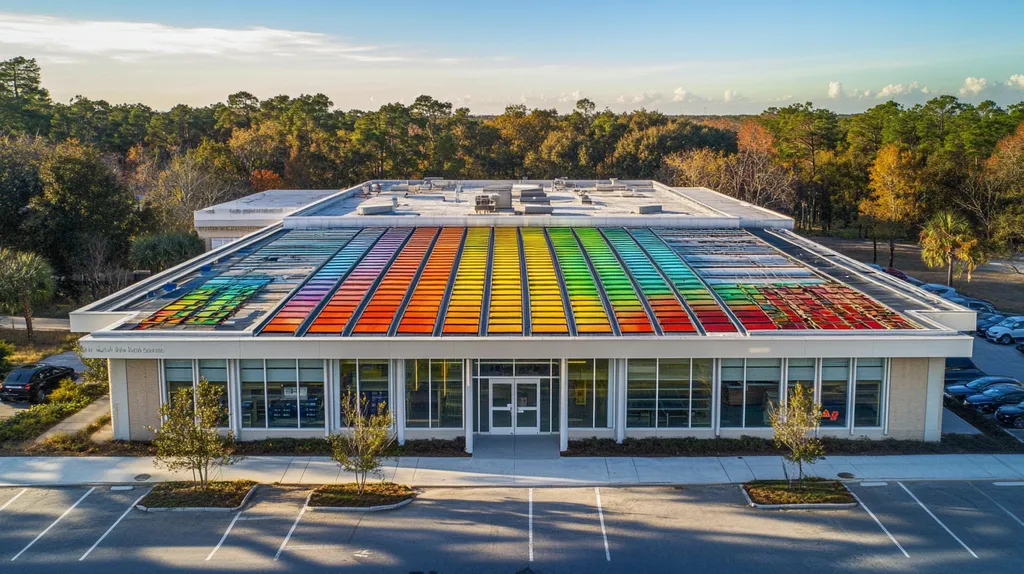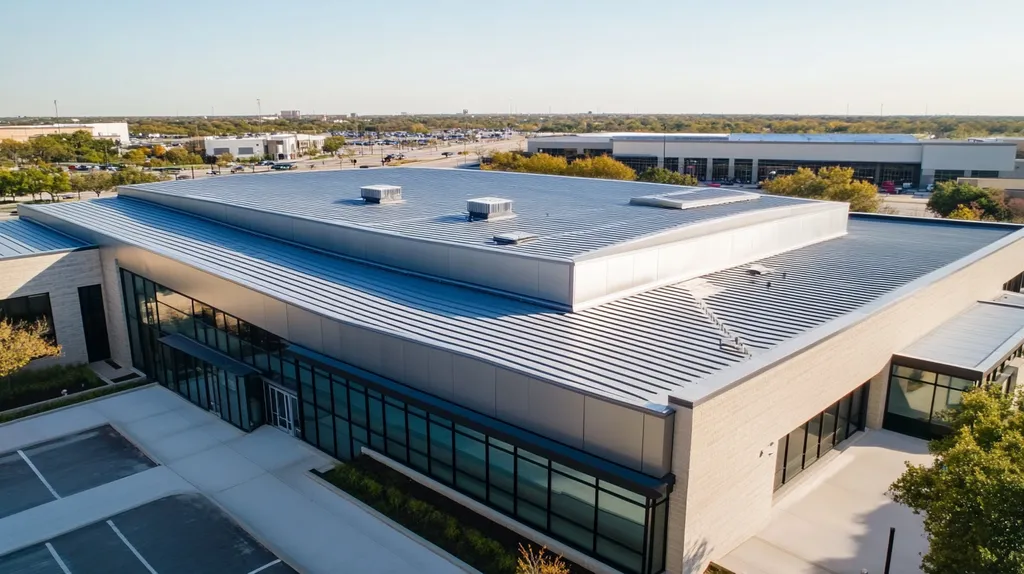In an era where commercial roofing costs continue to rise, building owners face a critical challenge: separating fact from fiction regarding roof coating maintenance expenses.
Industry data reveals that mismanaged coating programs can increase maintenance costs by up to 40%, while properly maintained systems can extend roof life by 15-20 years.
As roofing technology evolves from traditional built-up systems to advanced coating solutions, understanding the true costs and maintenance requirements becomes essential for protecting these substantial investments.
This comprehensive guide examines common misconceptions, practical implications, and evidence-based strategies for managing commercial roof coating expenses effectively.
SECTION 1: COMMON MISCONCEPTIONS
Many commercial property owners mistakenly believe that applying a roof coating is a quick and effortless way to extend the life of their roofs. This misconception can lead to costly repairs and significant financial setbacks. Industry estimates suggest that misguided decisions surrounding roof coatings can result in unforeseen expenses. Therefore, it’s essential to unravel the myths about coating maintenance and costs. This section will address three common misunderstandings: viewing coatings as quick fixes, the lack of awareness regarding maintenance needs, and the tendency to overestimate potential cost savings.
Myth: Coatings are a Quick Fix
Many building owners see roof coatings as a simple solution for aging roofs, leading to unrealistic expectations about their durability and longevity. While roof coatings effectively seal leaks and protect against UV damage, they are not a cure-all for roofing problems.
Coatings can certainly help address specific issues, but they don’t eliminate the necessity for a robust underlying roofing system. For example, if a roof has structural weaknesses, applying a coating won’t fix these critical problems, which can result in the early failure of both the coating and the roof itself.
Furthermore, owners may overlook essential repairs before applying a coating, mistakenly thinking that it will conceal existing issues. Without addressing these underlying problems, the coating is likely to fail sooner than expected, leading to even greater financial challenges.
Importantly, coatings should be integrated into a comprehensive roofing strategy that involves thorough assessments and timely repairs. This approach is vital for ensuring optimal performance and durability.
Misunderstanding Maintenance Needs
Another prevalent misconception is that a coated roof requires minimal to no maintenance. This assumption can result in serious problems over time. Regular maintenance is essential for extending any commercial roof’s lifespan, including those that utilize coatings.
Neglecting routine inspections can lead to unnoticed damage and a decrease in the coating’s effectiveness, making the roof susceptible to moisture infiltration. For example, if debris accumulates or water stands on the surface, it can deteriorate the coating and necessitate premature replacement.
Experts recommend a proactive maintenance schedule that includes at least two inspections a year. It’s also wise to plan for repairs as soon as damage is spotted because ignoring small issues can result in larger, more expensive repairs later on. By giving roofs the attention they require, property owners can make the most of their investment in coatings.
In conclusion, roof coatings demand ongoing care, much like any other roofing solution. Overlooking necessary maintenance can lead to significant costs that could have been easily prevented.
Overestimating Cost Savings
Many property owners assume that roof coatings will drastically cut their overall roofing costs. While it’s true that coatings can provide some savings, the full financial picture is often more intricate. Overestimating these savings can lead to budgetary constraints.
For instance, the upfront costs of applying a roof coating may appear to be less than a complete roof replacement. However, if the coating fails prematurely due to poor installation or insufficient maintenance, the costs can rapidly accumulate. Owners may find themselves facing extensive repairs or even needing a full roof replacement sooner than anticipated.
Moreover, various factors—such as the type of coating, roofing structure complexity, and local climate conditions—can influence overall pricing. Misjudging these elements can place a financial burden on building owners.
Therefore, it’s critical for property owners to conduct a detailed cost-benefit analysis before proceeding. Understanding potential ongoing costs is essential to avoid unpleasant surprises after a coating is applied.
SECTION 2: PRACTICAL IMPLICATIONS
Understanding the costs tied to maintaining a commercial roof coating is crucial for property owners. These expenses extend beyond mere dollars and cents; they can profoundly influence the longevity and effectiveness of the entire roofing system. Research has shown that with proper maintenance, a roof coating can potentially add up to 20% more life to a roof, safeguarding significant investments in infrastructure. To avoid costly pitfalls that lead to extensive repairs or premature replacements, property owners must grasp the practical implications of maintenance routines, energy efficiency, and the quality of application.
Impact on Roof Lifespan
The durability of a commercial roof coating hinges on regular maintenance. Studies indicate that roofs that receive timely inspections and upkeep can last an impressive five to ten years longer than those that don’t. Ignoring small issues, such as blisters or cracks, can lead to major structural failures, jeopardizing the entire roofing system.
Conducting proper inspections allows property owners to catch problems early. Routine checks can reveal issues like UV damage or standing water, which, if left unaddressed, may escalate into more serious concerns. Protecting the integrity of a roof coating not only proves cost-effective but also delays the need for expensive replacements.
Moreover, regular maintenance can enhance warranty protection from manufacturers. Many warranties specify that ongoing care is essential to maintain coverage, meaning neglect could void important protections.
In summary, proactive maintenance is key for roof coatings. By committing to regular care, property owners can significantly extend their roofs’ lifespans while minimizing long-term costs.
Effects on Energy Efficiency
The state of a roof coating directly impacts a commercial building’s energy efficiency. Research emphasizes that reflective roof coatings can lower cooling costs by as much as 30%, providing tangible relief on operational expenses. However, if a coating is damaged or poorly maintained, these energy savings can dwindle quickly.
Neglected coatings may lead to increased thermal transfer, which forces HVAC systems to work harder. This inefficiency not just inflates energy bills but also diminishes the comfort of building occupants. A roof that loses its reflective properties due to dirt buildup can drive internal temperatures up, making air conditioning systems run longer and consume more power.
Furthermore, consistent maintenance supports business sustainability efforts. Property owners striving for LEED certification or similar green ratings can enhance their environmental credentials through energy-efficient practices like regular roof care.
In essence, paying attention to roof coatings not only conserves financial resources but also aligns with broader sustainability goals—resulting in both energy savings and environmental benefits.
Consequences of Poor Application
The quality of roof coating application is pivotal, as subpar practices can lead to devastating outcomes. For instance, inadequate surface preparation might result in insufficient adhesion, causing coatings to peel or blister. This not only leads to costly reapplications but can also endanger the integrity of the underlying roof materials.
Poorly applied coatings may also permit water infiltration, jeopardizing insulation and structural integrity. There have been cases where commercial roofs failed prematurely due to improper application techniques, resulting in repair bills that far exceed any initial savings from hiring unqualified contractors.
Additionally, the long-term performance of a coating can suffer from poor application practices. Coatings applied too thinly leave areas vulnerable to UV damage, ultimately shortening roof lifespans and inflating maintenance expenses.
For building owners, the message is clear: investing in skilled applicators is essential for ensuring a roof’s longevity and maximizing the benefits of maintenance investments.
SECTION 3: COST OF MISINFORMATION
The stakes of misinformation regarding commercial roof coatings are alarmingly high. Poor decision-making can lead to costly reactive maintenance, unexpectedly escalating expenses over time. Research indicates that facilities that delay necessary upkeep can incur costs 50% higher than those who address issues promptly. Understanding these financial implications is crucial for decision-makers in the industry.
Hidden Costs of Reactive Maintenance
Reactive maintenance may seem like an attractive short-term solution for property owners. However, the hidden costs can accumulate rapidly. For example, a small leak left unaddressed can evolve into significant water intrusion, impacting multiple building systems.
When owners postpone dealing with minor issues, repair costs often escalate dramatically. These immediate maintenance expenses are just part of the broader picture; property damage, increased energy bills, and safety liabilities can create unexpected financial burdens.
Furthermore, delays caused by emergency interventions can disrupt normal operations. This interruption translates into lost productivity, which can lead to substantial revenue losses over time.
Ultimately, these hidden costs stress the importance of proactive roof coating maintenance. Making informed decisions based on accurate information can not only extend roof lifespan but also safeguard a facility’s financial health.
Financial Burden of Premature Replacement
One of the most significant issues stemming from misinformation is the premature replacement of roofing systems. Some contractors may push for early replacement, claiming that existing coatings are no longer effective. This approach can place a considerable financial burden on property owners.
A facility that is misled into unnecessary roof replacement could face expenses in the tens of thousands of dollars. In contrast, a well-maintained roof with proper coatings can often exceed expected lifespans, ultimately saving building owners significant funds.
Moreover, the premature replacement process can be complex, often involving costly removal procedures. These practices can leave facility managers frustrated and cautious in their future roofing investments.
By relying on solid information and adhering to regular inspection schedules, owners can avoid such financial strains. Making well-informed decisions empowers property managers to adopt more effective maintenance strategies and avoid unnecessary replacements.
Lost Savings from Inadequate Coatings
The selection of roof coatings greatly influences long-term savings potential. Misleading information about suitable products can lead to choices that underperform, ultimately resulting in lost savings. For instance, opting for cheap coatings that fail to adhere properly can result in frequent, costly repairs.
Property owners who choose lower-quality coatings also face higher energy costs. Effective coatings reflect harmful UV rays and mitigate heat buildup, leading to lower cooling expenditures. In contrast, inadequate products do not deliver these crucial energy-efficient benefits.
Additionally, these subpar coatings can shorten the lifespan of the overall roofing system, potentially leading to expensive replacements in the future. Such outcomes negate any initial savings and compound financial impacts over time.
Investing in high-quality coatings based on accurate information is essential. Focusing on durable and efficient roofing solutions can protect financial resources and preserve valuable assets in the long run.
SECTION 4: REALITY CHECK
Understanding the true costs of maintaining a commercial roof coating is crucial for property owners and facility managers alike. Many individuals overlook the long-term expenses that can vary widely based on specific conditions and application methods. Studies show that misjudging these financial intricacies can lead to annual losses ranging from thousands to millions of dollars. This section will demystify the actual costs per square foot, explore the factors that influence these costs, and highlight the indispensable importance of professional application.
Actual Cost per Square Foot
The price of applying a roof coating generally ranges from $1.50 to $4.00 per square foot. However, this price can be affected by various factors. For instance, a basic reflective coating might be more budget-friendly, while high-performance elastomeric options may require a larger investment.
It’s vital to consider the costs of preparation, such as cleaning and repairs, which can add an additional $0.50 to $1.00 per square foot. Failing to take these expenses into account can lead to underbudgeting and potential delays in the project. An accurate initial estimate is essential for preventing financial strain down the line.
Equipped with the right information, property owners can make choices aligned with their budgetary needs. Those who take the time to understand these variables often save significantly when selecting coatings.
Furthermore, gathering bids from multiple contractors can uncover discrepancies of up to 20% in installation costs, underscoring the importance of thorough research and not settling for the first option available.
Factors Influencing Coating Costs
Several critical factors can considerably impact the total cost of a commercial roof coating. Geographic location plays a significant role, as different regions often have varying labor rates and material prices. Additionally, climate is paramount; areas subjected to extreme weather may require specialized coatings to guarantee durability.
The condition of the existing roof is another important consideration. Roofs that require extensive repairs will incur higher upfront costs. Property owners should factor in these potential expenses to avoid unanticipated financial pressures during the project.
Moreover, the complexity of the building can influence pricing. Roofs with numerous penetrations or irregular shapes may necessitate additional materials and labor. Conducting a thorough assessment of the roof before application is essential for accurate budgeting.
Finally, coating thickness and warranty specifications can also affect price. Premium coatings often come with longer warranties but necessitate larger initial investments. It is crucial for property owners to balance short-term expenses with long-term benefits during the planning stages.
Importance of Professional Application
The significance of employing professional applicators for roof coatings cannot be underestimated. Skilled contractors ensure that products are applied correctly, which leads to improved performance and longevity. Poor installation can precipitate premature wear, resulting in costly reapplications or repairs.
Strict industry standards dictate precise installation protocols essential for maximizing a coating’s effectiveness. Errors made during this process can void warranties, exposing property owners to additional expenses.
Additionally, experienced applicators are well-versed in local building codes and regulations, helping to avert legal complications later on. They are also adept at identifying hidden issues that may not be immediately apparent.
Ultimately, investing in a qualified contractor not only secures the initial investment but also provides peace of mind. The potential long-term reliability of the coating and the resulting cost savings far outweigh any initial hiring expenses.
SECTION 5: EVIDENCE-BASED ALTERNATIVES
As commercial property owners grapple with rising maintenance costs, prioritizing proactive roof management becomes imperative. Research indicates that buildings with structured maintenance programs can reduce emergency repairs by up to 70%. This section delves into the necessity of proactive maintenance, the cost-effectiveness of roof coatings, and the long-term savings they offer, equipping owners to make informed decisions.
Benefits of Proactive Maintenance Programs
Proactive maintenance programs are vital for safeguarding commercial roofs. They facilitate early identification of potential issues before they escalate into costly repairs. For instance, regular inspections can uncover minor leaks that, if ignored, could result in extensive water damage.
Implementing such programs helps maintain roof durability and functionality over the long haul. Routine maintenance enables property managers to allocate resources efficiently and create predictable roofing expense forecasts rather than resorting to reactive solutions.
Moreover, proactive maintenance significantly extends roof lifespans. Data shows that roofs receiving consistent maintenance can last up to 30% longer than those that receive limited care, leading to fewer premature replacements.
Consequently, property owners can develop stronger financial strategies. By gaining clarity on roofing costs and avoiding unforeseen expenses, they can manage their budgets more effectively.
Cost-Effectiveness of Roof Coatings
Investing in roof coatings offers a cost-effective alternative to traditional roofing systems. They typically present lower upfront costs compared to complete roof replacements, while providing a protective layer that enhances the life of existing roofs, making this option appealing.
Research shows that roof coatings can yield savings of up to 30% in energy costs throughout their lifespan. By reflecting sunlight, these coatings lower building temperatures, reducing reliance on air conditioning during warm months.
Additionally, many roofing contractors provide warranties on newly coated roofs, which further bolsters investment value. These warranties often cover repairs and maintenance for a specified time, adding an extra layer of security for property owners.
By balancing short-term benefits with long-term gains, roof coatings promote financial savvy among building owners, ensuring optimal use of roofing budgets and improving overall resource management.
Long-Term Savings Through Coatings
The potential long-term savings derived from roof coatings are significant. Beyond immediate cost reductions, they substantially lower lifecycle expenses. A well-maintained roof coating can postpone the need for costly roof replacements by as much as 15 years.
Enhanced performance also means fewer operational disruptions. Businesses face diminished interruptions from leaks and can save on costs related to downtime and repairs.
Moreover, coated roofs add to property value. When selling a building, modern coatings attract buyers due to their lower maintenance needs and improved energy efficiency.
Every property owner focused on durability and efficiency will find that roof coatings align with overarching financial objectives. Making informed choices from the outset fosters lasting advantages, considerably enhancing the overall value of assets.
SECTION 6: TEST AND VERIFY
For property owners, maintaining a commercial roof coating isn’t just about initial application; it also requires ongoing testing and verification. Alarmingly, studies indicate that over 30% of commercial roof failures stem from inadequate inspections and lack of comprehensive documentation. Regular assessments not only contribute to a roof’s longevity but also safeguard substantial financial investments. This section highlights the essential practices of conducting roof inspections, maintaining meticulous documentation, and verifying warranties and manufacturer claims.
Conducting Regular Roof Inspections
Regular roof inspections act as the frontline defense against damage and deterioration. Ideally, property owners should conduct these inspections at least biannually or following severe weather events. Comprehensive inspections can catch issues like cracks, punctures, and moisture infiltration in their early stages, allowing for timely repairs.
These inspections also help assess the coating’s effectiveness. A properly coated roof, made with high-quality materials, should display resilience against UV rays and weather conditions. Regular assessments establish a baseline for the roof’s condition, fostering informed long-term planning.
Engaging a qualified roofing professional for these inspections can yield expert insights. They can employ techniques like infrared thermography to detect hidden moisture issues, enhancing safety and maximizing the roof’s lifespan.
Moreover, contractors will typically document the inspection outcomes, generating a vital historical record. This documentation is crucial for tracking the roof’s performance over time and becomes an invaluable asset during warranty claims or if the property is put up for sale.
Documenting Roof History and Condition
Systematic documentation of the roof’s history and current condition is fundamental for preserving its integrity. Detailed records assist in identifying recurring issues and tracking the timeline of repairs and coatings applied. This information is particularly crucial when evaluating the roof’s waterproofing status.
Property owners should maintain a comprehensive log detailing all aspects of the roof’s maintenance, including past inspections, repairs, and cleaning schedules. For example, a 20-year-old roof with a diligent history of maintenance may outperform a newer roof lacking such a documented care plan.
Furthermore, property managers can leverage this documentation for effective budget forecasting. An established roof maintenance history aids in planning for major repairs and replacements, minimizing unexpected costs and potentially saving thousands in emergency repairs.
Transitioning to digital records can streamline operations, facilitating easy retrieval during warranty claims or inspections. Roof management software can enhance accessibility and provide timely alerts for scheduled maintenance.
Verifying Warranty and Manufacturer Claims
Understanding warranty terms and verifying manufacturer claims are crucial for maintaining the roof’s performance. Many property owners mistakenly believe that warranties cover all types of damage, but specific conditions must be met to validate these claims. Familiarity with these stipulations can lead to substantial savings on repairs.
Careful review of warranty documents is essential, particularly concerning any exclusions or requirements. For instance, some warranties may require annual inspections to remain valid, underscoring the need for regular assessments.
Validating the manufacturer’s claims ensures that the products used are effective and meet prescribed application standards. Adhering to these guidelines is critical; failure to do so could void the warranty.
Lastly, open communication between property owners, manufacturers, and contractors is vital. Clearly expressing any concerns can lead to better support during the claims process. By taking these precautions, owners can protect their investment and navigate the complexities of warranties successfully.
Looking Ahead
The commercial roofing industry has witnessed a dramatic evolution from traditional built-up systems to advanced coating technologies, yet misconceptions about maintenance costs continue to plague property owners.
Studies show that facilities implementing proper coating maintenance programs reduce their long-term expenses by up to 40% while extending roof life by 15-20 years.
As construction costs rise and energy efficiency becomes paramount, the stakes for making informed decisions about roof coatings have never been higher.
The evidence is clear: successful commercial roof coating maintenance requires a commitment to regular inspections, proper documentation, and collaboration with qualified professionals.
Those who embrace these evidence-based practices will protect their investments, while those who ignore them risk facing premature replacements and escalating repair costs in an increasingly competitive market.
FREQUENTLY ASKED QUESTIONS
Q. Are commercial roofs with coatings truly low-maintenance?
A. Contrary to popular belief, coated roofs require regular inspections and maintenance. Many owners mistakenly assume that coatings will eliminate upkeep entirely. Engaging in routine checks can prevent small issues from evolving into costly repairs, extending the lifespan of the roofing system significantly.
Q. How can property owners gauge commercial roof maintenance costs?
A. To accurately assess maintenance costs, owners should conduct thorough inspections and factor in repair needs. Regular reviews of coating effectiveness and roof condition can shed light on potential expenses. This proactive approach helps property owners budget wisely and avoid unexpected financial burdens over time.
Q. What are common misconceptions about coatings on industrial roofs?
A. Many property owners assume that coatings are a foolproof solution that requires no further maintenance. This misconception can lead to premature failures as underlying issues may remain unresolved. Understanding the reality of coating functions ensures more effective long-term management of the roofing system.
Q. What financial implications arise from poorly maintained commercial roofs?
A. Inadequate roof maintenance can culminate in skyrocketing repair costs and premature replacements. A small issue, if left unchecked, might lead to major structural damage that can significantly inflate expenses. By staying proactive with inspections and maintenance, property managers can protect their investments and reduce financial liabilities.
Q. How do energy-efficient coatings benefit commercial building operations?
A. Energy-efficient coatings can lower cooling costs substantially by reflecting sunlight. This reduction in heat transfer diminishes the workload on HVAC systems, resulting in lower energy bills. Implementing such coatings aligns with sustainability goals and promotes comfortable working environments for building occupants.
Q. What are the consequences of hiring unqualified applicators for commercial roofs?
A. Unqualified applicators can lead to improper installation, resulting in premature roof failures. Issues like inadequate surface preparation might cause coatings to peel or become ineffective, ultimately leading to costly repairs. Ensuring that a skilled contractor performs the work is vital for maximizing the longevity and effectiveness of roofing systems.
Q. How can roof inspections enhance the lifespan of commercial roofs?
A. Regular roof inspections are crucial for identifying minor issues before they escalate. Timely repairs can prevent extensive damage, ultimately prolonging the roof’s lifespan. Establishing a schedule for inspections enhances the effectiveness of the coating, maintaining its protective qualities and safeguarding the underlying roofing structure.


